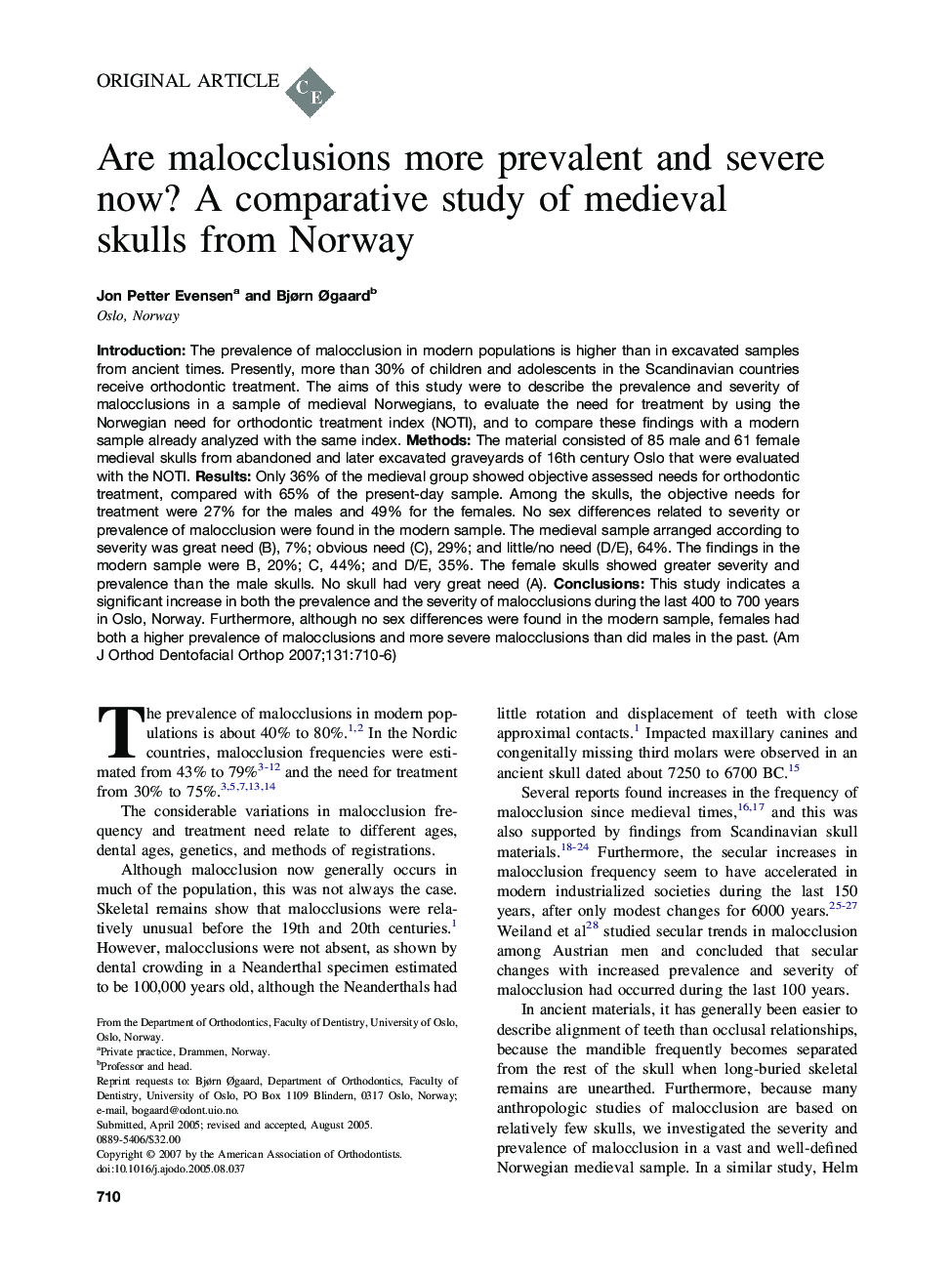| Article ID | Journal | Published Year | Pages | File Type |
|---|---|---|---|---|
| 3120407 | American Journal of Orthodontics and Dentofacial Orthopedics | 2007 | 7 Pages |
Introduction: The prevalence of malocclusion in modern populations is higher than in excavated samples from ancient times. Presently, more than 30% of children and adolescents in the Scandinavian countries receive orthodontic treatment. The aims of this study were to describe the prevalence and severity of malocclusions in a sample of medieval Norwegians, to evaluate the need for treatment by using the Norwegian need for orthodontic treatment index (NOTI), and to compare these findings with a modern sample already analyzed with the same index. Methods: The material consisted of 85 male and 61 female medieval skulls from abandoned and later excavated graveyards of 16th century Oslo that were evaluated with the NOTI. Results: Only 36% of the medieval group showed objective assessed needs for orthodontic treatment, compared with 65% of the present-day sample. Among the skulls, the objective needs for treatment were 27% for the males and 49% for the females. No sex differences related to severity or prevalence of malocclusion were found in the modern sample. The medieval sample arranged according to severity was great need (B), 7%; obvious need (C), 29%; and little/no need (D/E), 64%. The findings in the modern sample were B, 20%; C, 44%; and D/E, 35%. The female skulls showed greater severity and prevalence than the male skulls. No skull had very great need (A). Conclusions: This study indicates a significant increase in both the prevalence and the severity of malocclusions during the last 400 to 700 years in Oslo, Norway. Furthermore, although no sex differences were found in the modern sample, females had both a higher prevalence of malocclusions and more severe malocclusions than did males in the past.
